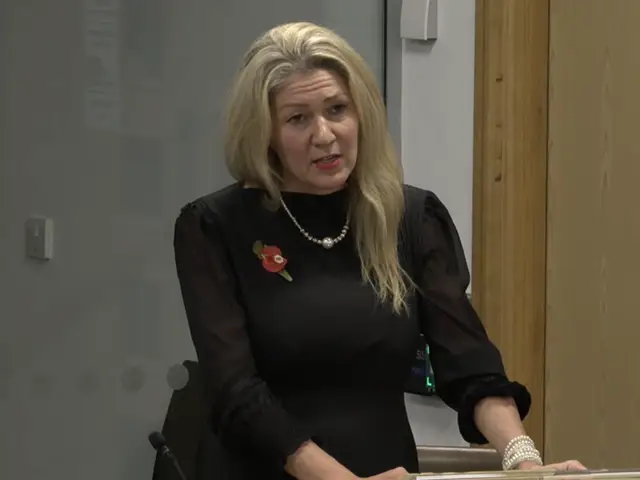Health
Exploring the science of ionic versus ceramic: A guide to selecting the ideal hair tool material for your product

The materials utilized in the heating elements and plates of hair styling tools are essential in influencing performance, hair health, and the final outcomes. In the quest for innovation and to satisfy customer needs, it’s essential for brands and product developers to grasp the science behind ionic and ceramic technologies to make well-informed choices. BeautySourcing explores the advantages of each material and how they can enhance your upcoming range of hair styling tools.
Exploring ionic technology
Ionic technology has emerged as a fundamental feature in contemporary hair dryers and styling tools, thanks to its capacity to generate negative ions. The ions effectively break down water molecules at an accelerated pace, enabling quicker drying of hair while simultaneously sealing in moisture. Ionic hair styling tools stand out for their ability to tame frizz, enhance shine, and reduce heat damage.
Benefits of ionic technology:
Experience quicker drying: Ionic hair dryers work by neutralizing positive ions, allowing them to break down water more effectively, resulting in faster drying times without the need for high heat.
Experience smoother, shinier hair: With the power of ionic technology, you can seal the hair cuticle, minimize frizz, and achieve a sleek, glossy finish.
Heat protection: With its quick-drying capabilities, it minimizes the time your hair is exposed to high temperatures, thereby lowering the chances of heat damage.
Perfect for those with thick, frizzy hair: Ionic hair dryers and tools are especially advantageous for individuals dealing with thick or frizzy hair that often demands extra styling attention.
Reasons to opt for ceramic
Ceramic technology is commonly utilized in flat irons, curling irons, and hair dryers, providing even heat distribution across the tool’s surface. In contrast to conventional metals that may generate hotspots and harm your hair, ceramic materials provide a steady temperature, safeguarding the hair shaft throughout the styling process.
Benefits of ceramic technology:
Uniform heat distribution: With ceramic plates and heaters, you can achieve consistent heat, eliminating the risk of hot spots that may scorch or harm your hair.
Smoother styling: With ceramic tools, your hair glides effortlessly, minimizing tugging and achieving a polished look.
The consistent warmth provided by ceramic plates allows for effective styling of hair while minimizing the risk of excessive heat damage.
Perfect for every hair type: Ceramic tools are a versatile choice for salons, effectively catering to all hair textures, whether fine or thick, curly or straight.
Ionic or ceramic: Which one should you choose for your next product?
When choosing between ionic and ceramic hair tools, it’s essential to think about your audience and what they specifically require. Ionic technology is perfect for those looking to minimize frizz, enhance drying efficiency, and address the needs of thicker or more unruly hair types. Ceramic tools stand out for their ability to provide consistent results across different hair textures. They are especially ideal for those looking to reduce heat damage while achieving a sleek, polished look.
In numerous instances, merging these two technologies can lead to a successful outcome. An ionic ceramic hair dryer provides the advantages of quick drying while ensuring smooth, frizz-free results, which is why it’s favored by both professional salons and home users alike.
Finding a supplier for premium hair tools
When creating a new line of hair styling tools, collaborating with a dependable supplier is crucial for guaranteeing high-quality products that satisfy market needs. BeautySourcing brings together brands and skilled manufacturers who excel in ionic and ceramic hair tools, offering the adaptability and creativity essential for cutting-edge product development.
Conclusion
As hair styling trends change, the materials and technologies utilized in professional tools also advance. Choosing between ionic, ceramic, or a blend of both requires a grasp of the science behind these materials to guarantee that your products achieve top-notch performance standards. Selecting the appropriate technology will not only elevate your brand’s services but also provide your clients with healthier, more stunning outcomes.
Are you on the hunt for top-notch hair styling tools that incorporate the newest technologies? Dive into the vast selection of ionic and ceramic tools offered by BeautySourcing, featuring top manufacturers, and elevate your next product line to new heights.
Health
Welsh NHS leaders hail GP contract deal as “vital step” in strengthening primary care

Agreement secures investment, digital upgrades and better patient pathways
WELSH NHS leaders have welcomed the successful conclusion of the new General Medical Services (GMS) contract for 2025-26 — and key elements of 2026-27 — describing it as a “positive example of social partnership” at a pivotal moment for general practice.
The deal, negotiated between Welsh Government, the Welsh NHS Confederation and GP representatives, sets out new investment and commitments for frontline primary care, including accelerated digital transformation through the NHS Wales App and strengthened support for population-level health management.
Darren Hughes, director of the Welsh NHS Confederation, said the agreement comes at a crucial time for GP services across Wales.
He said: “NHS leaders welcome this agreement as a positive example of social partnership in action. We also welcome the commitment to accelerating digital transformation for patients through the NHS Wales App and the measures agreed in the contract to enable enhanced population health management, such as diabetes management.”
Mr Hughes added that GPs and their multidisciplinary teams remain “the front door to the NHS,” and stressed that investment in general practice is essential if Wales is to treat more people closer to home.
“Evidence shows investing in primary and community care reduces demand on hospitals and emergency care and delivers returns of £14 for every £1 invested. To enable this shift ‘upstream’ from hospital-centred care to integrated services in the community, we must develop care pathways and joint performance measures that address the full needs of individuals,” he said.
Background: Why the GP contract matters
General practice forms the foundation of the Welsh NHS, handling millions of patient contacts every year. According to the latest official figures for 2023-24:
- Over 29 million calls were received by GP practices
- 18 million appointments took place
- 11 million of these were face-to-face
- More than 200,000 home visits were carried out
- 78 million prescriptions were dispensed
- Over 14,000 medication reviews took place
Demand has continued to rise while GP numbers have come under sustained pressure, particularly in rural areas such as Pembrokeshire, Ceredigion and Powys, where recruitment remains a long-running challenge. Practices in West Wales have repeatedly reported difficulties filling vacancies and increasing reliance on multidisciplinary teams, including nurse practitioners, pharmacists and physiotherapists.
The new GMS contract is therefore seen as a key mechanism for stabilising the sector, supporting digital access, improving chronic disease management, and helping to deliver the Welsh Government’s community-by-design programme, which aims to shift care away from hospitals and into community settings.
A recent survey by the Welsh NHS Confederation found that 74 per cent of NHS leaders support moving resources from acute hospital services into primary care, community-based services, mental health and social care, reflecting growing consensus around early intervention and prevention.
What comes next
The Welsh Government is expected to outline further detail in the coming months on how investment will be delivered at practice level, including support for digital tools, workforce development and shared performance measures with health boards.
With winter pressures mounting and hospitals facing record demand, NHS leaders say the success of the new GP contract will be central to improving access, reducing waiting times and ensuring patients in communities such as Pembrokeshire, Carmarthenshire and Ceredigion can receive timely, local care before conditions escalate.
The Welsh NHS Confederation represents all seven local health boards, the three NHS trusts, Health Education and Improvement Wales, and Digital Health and Care Wales.
Charity
Motorcycle fundraisers transform children’s play area at Glangwili Hospital

Long-running 3 Amigos and Dollies group marks 25 years of support
THANKS to outstanding fundraising by the Pembrokeshire-based 3 Amigos and Dollies Motorcycle Group, Hywel Dda Health Charities has funded a major improvement of the outdoor play area at Cilgerran children’s ward in Glangwili Hospital — a project costing more than £15,000.
The 3 Amigos and Dollies have supported Hywel Dda University Health Board’s children’s services for twenty-five years, with their Easter and Christmas toy runs becoming landmark dates in the local calendar, drawing hundreds of bikers and supporters from across west Wales.
The latest funding has delivered a full transformation of the ward’s outdoor space, including a re-sprayed graffiti wall, new toys and play equipment, a summer house, improved storage, and a moveable ramp to make the area more accessible for young patients. Members of the group even volunteered to help paint and refresh the space themselves.
Paula Goode, Service Director for Planned and Specialist Care, said: **“We are so grateful to the 3 Amigos and Dollies Motorcycle Group for their amazing support. Not only have they raised an incredible amount for the ward, but they have given their time to help make the outdoor space as special as possible.
“Outdoor play greatly reduces stress and anxiety for children, and it provides a vital opportunity to meet other young people going through similar experiences. It benefits both their physical and mental wellbeing, so we couldn’t be happier with the transformation.”
Tobi Evans, a volunteer with the fundraising group, said: “Because of the generosity of everyone who donates, we are able to give thousands each year. We are always humbled by how much people give, and it’s thanks to them that we’ve reached our 25th year.”
Katie Hancock, Fundraising Officer for Hywel Dda Health Charities, added: “We can’t thank the 3 Amigos and Dollies enough for their support for Cilgerran ward. You have put a smile on so many faces. Diolch yn fawr!”
Hywel Dda Health Charities funds items, equipment and activities that go beyond core NHS funding, making a meaningful difference to children and families across mid and west Wales.
Health
Patients treated in store cupboards as corridor care ‘normalised’

PATIENTS are being treated in store cupboards, break rooms and toilets as so-called corridor care becomes the norm in Welsh hospitals, the Senedd has heard.
Senedd Members warned treating patients in inappropriate areas has become a “daily reality” rather than an exception as they debated calls for the practice to be eradicated.
The debate was prompted by a petition – submitted by the Royal College of Nursing (RCN) and British Medical Association (BMA) – which gathered more than 10,000 signatures.
Petitioners demanded that keeping patients on trolleys or chairs for a long time be formally classified as a “never event” – a serious, preventable safety incident that should not happen.
But the Welsh Government rejected the calls, arguing the strict definition of a “never event” applies only to preventable medical mistakes – not systemic capacity pressures.
The petition urged ministers to start reporting on corridor care, pause reductions in hospital beds, invest in community care, and prioritise prevention and early intervention.
Sharing her own experience, Reform UK’s Laura Anne Jones argued corridor care is one of the clearest signs of a health service that has been allowed to fall into crisis.

“I was placed on a broken bed in a corridor for two nights before a room became available,” she said. “I was in too much pain to care at the time but those caring for me said how completely inappropriate it was and kept apologising for it.”
Ms Jones added: “I could hear private conversations between consultants, doctors and nurses about other patients. And I was right against a curtainless window… there was no dignity, no privacy, and that’s just not OK.”
The Conservatives’ Joel James told the Senedd thousands of patients are now being treated on trolleys in corridors, in ambulances, store cupboards and other places not meant for care. “This is putting life at risk,” he said. “They are being treated without proper facilities.”
Mr James warned: “NHS Wales doesn’t even collect data on who is being treated in a corridor. That frankly should surprise no-one, as Welsh Labour’s philosophy has always been, if you don’t measure it, then there is no evidence to pin you down on it.”

His Tory colleague Janet Finch-Saunders said: “I even know of situations where a paramedic will leave a patient in an ambulance with a new paramedic coming on. When that paramedic comes back on the next shift, the same patient is still in that ambulance
“How can that be morally right? It’s inhumane, it’s cruel and it’s certainly unacceptable.”
Mabon ap Gwynfor, Plaid Cymru’s shadow health secretary, warned the “demeaning and dangerous” practice has become an “almost inescapable” part of hospital care.
“What should be the exception has now been normalised,” he said.

Rhys ab Owen, who sits as an independent, highlighted reports of patients being cared for in “car parks, break rooms and even toilets”.
Labour’s Carolyn Thomas, who chairs the Senedd’s petitions committee, warned that RCN and BMA members view corridor care as a “systemic national crisis”.
Responding to the debate on Wednesday December 10, Jeremy Miles acknowledged that corridor care “compromises patient dignity and staff wellbeing”.

But Wales’ health secretary insisted that designating corridor care as a “never event” was not the solution. “The delivery of care in undesignated or non-clinical environments doesn’t meet the criteria due to the complexity of underlying causes,” he said.
Mr Miles told the Senedd: “We do not endorse routine care in non-clinical environments. Our goal is to eliminate this practice through system-wide reform.
“Eradicating care in undesignated or non-clinical environments will not be a simple quick fix. It requires co-ordinated action across health and social care.”
-

 Crime5 days ago
Crime5 days agoPhillips found guilty of raping baby in “worst case” judge has ever dealt with
-

 Crime4 days ago
Crime4 days agoKilgetty scaffolder sentenced after driving with cocaine and in system
-

 Crime4 days ago
Crime4 days agoHousing site director sentenced after failing to provide breath sample following crash
-

 Crime4 days ago
Crime4 days agoMotorist banned for three years after driving with cannabis in system
-

 Education3 days ago
Education3 days agoTeaching assistant struck off after asking pupil for photos of her body
-

 News6 days ago
News6 days agoJury retires tomorrow in harrowing Baby C rape trial
-

 Crime4 days ago
Crime4 days agoMilford Haven pensioner denies exposure charges
-

 Local Government6 days ago
Local Government6 days agoNew defamation row erupts after anonymous website targets Herald editor

























